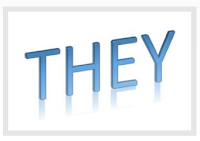One of the most difficult situations for an editor to deal with is finding plagiarism in a client’s work. The initial reaction is often shock or disbelief, which is the result of the editor’s knowledge and understanding of the legal and ethical issues surrounding plagiarism. This understanding is not always shared by our clients. Regardless of culture, or author awareness of the ethics of plagiarism, both native and non-native English speakers may struggle to identify plagiarism in their own work, and so it is good practice to never assume that plagiarism has been done maliciously or was intentional.
With this in mind, Joely Taylor and I teamed up to co-author a presentation on plagiarism for the 9th
Institute of Professional Editors Limited national editors conference in Melbourne, Australia, in May 2019. We have since expanded on the content in the talk and have written a paper to provide authors and editors with a more comprehensive guide on plagiarism.
In the paper we explain that there are numerous methods for finding plagiarism in text, including relying on the editor’s own ear in picking up sudden changes in language, finding hotlinks in text and using commercial plagiarism-checking software. We also describe the different categories of plagiarism, including self-plagiarism, patch-writing and copy-paste writing.
In an increasingly digitised world, with exponential growth in publications, in this case scientific publications, preventing plagiarism becomes a larger and more complex issue. In addition, English may be the international language of science, but increasingly non-native English speakers are contributing to science by writing journal papers. It is the role of the international research community to ensure that the privilege of native English speakers does not stand in the way of the continued unification and dissemination of good research by researchers across the globe.
Despite the reason for plagiarism, understanding the different categories of plagiarism and how it comes about will assist authors and editors in better managing plagiarism when it appears in text and in being able to confidently and knowledgeably understand plagiarism and how to avoid it in the future.
“It is the role of the international research community to ensure that the privilege of native English speakers does not stand in the way of the continued unification and dissemination of good research by researchers across the globe.”
Download the paper
‘Purging plagiarism: Why authors plagiarise and how to fix it’.
View this
blog post and the paper on Dr Joely Taylor’s blog,
Well Writ.
Dr Joely Taylor is a former research scientist. Specialising in academic, technical and scientific editing, Dr Taylor is an Accredited Editor with the Institute of Professional Editors Ltd in Australia, an Editor in the Life Sciences with the Board of Editors in the Life Sciences in the US, and an Advanced Professional Member of the Chartered Institute of Editing and Proofreading (the former Society for Editors and Proofreaders) in the UK.
Katharine O’Moore-Klopf, ELS, is a self-employed medical editor with board certification in the life sciences. Her editing has helped researchers in more than 20 nations get published in more than 50 different medical journals. She is a member of the Editorial Freelancers Association, the Council of Science Editors, the American Medical Writers Association, the Board of Editors in the Life Sciences, and ACES: the Society for Editing.




